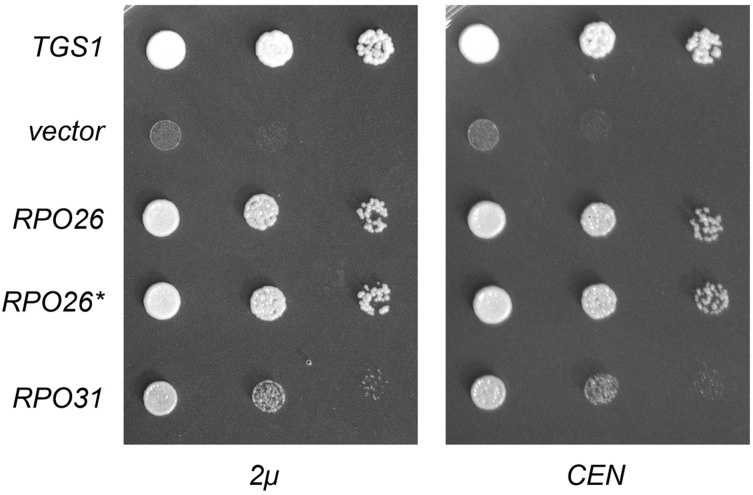Figure 4.
RPO26 and RPO31, at low gene dosage, are capable of restoring growth of tgs1Δ at 18°. (Left) Yeast tgs1Δ cells were transformed with a CEN URA3 plasmid bearing wild-type TGS1 (positive control), an empty 2-μ URA3 vector (negative control), and 2-μ URA3 plasmids expressing wild-type RPO26, intron-less RPO26 cDNA (RPO26*), or RPO31. Ura+ transformants were selected at 30° and then tested for growth at 18° by spotting serial 10-fold dilutions of liquid cultures (grown at 30° in SD–Ura medium) on Ura− agar plates. The plates were photographed after incubation for 7 d at 18°. (Right) Yeast tgs1Δ cells were transformed with a CEN LEU2 plasmid bearing wild-type TGS1 (positive control), an empty CEN LEU2 vector (negative control), and CEN LEU2 plasmids expressing wild-type RPO26, RPO26*, or RPO31. Leu+ transformants were selected at 30° and then tested for growth at 18° by spotting serial 10-fold dilutions of liquid cultures (grown at 30° in SD-Leu medium) on SD-Leu agar plates. The plates were photographed after incubation for 7 d at 18°.

